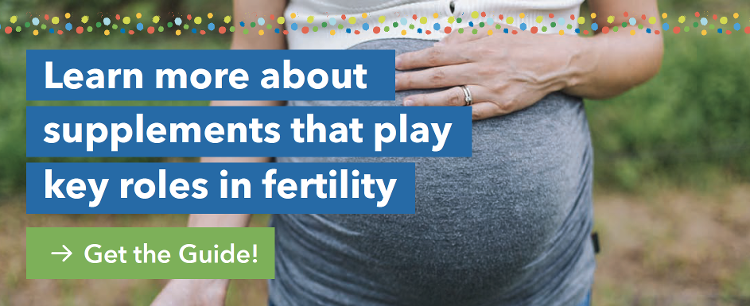.jpg?width=700&name=pink-art-female-feminine-knitting-turquoise-teal-sex-feminist-art-uterus_t20_pYXzAP%20(1).jpg)
The uterus is one of the most overlooked environments in the human body, and it can impact both mother and child long after birth.
Chinese medicine stresses the fundamental concept that a woman and her child should not be separated, as they are a synergistic unit integral to each other’s health, as well as the health of the family and their community at large.
If you are a woman in the beginning stages of family planning, understanding the uterine environment and how it impacts the health of your fetus is key. More and more information has unfolded showing a relationship between uterine health and autoimmunity, poor lung health, inflammation, sensory issues, behavior and communication problems, and attention span.
If you are already pregnant, rest assured that the body is very malleable and receptive to change, and it’s eager to heal. Let’s begin with what we already understand and what we are still discovering about uterine health and the preconception environment.
Preconception: What We Know and What We’re Learning
We already know a lot about certain aspects of a healthy preconception environment, and these are things you’ve likely heard from your doctor. For example, you’ve heard that smoking cuts off the oxygen supply to cells and that alcohol deprives and depletes the fetus of essential nutrients.
It’s also common knowledge that high-mercury fish like shark, tilefish, swordfish, kingfish, and mackerel should be avoided, as should soft cheeses and deli meats due to their high risk of listeria, which can invade and cross over the placental barrier. You and your doctor may have also discussed medications that must be avoided during pregnancy.
What’s not often talked about are the environmental toxins that pose a serious risk to your unborn child and fetus, and how this plays out through the preconception period, pregnancy, and into the future health of mother and child.
Even just 100 years ago, the soil was more nutrient-rich and air quality was better than it is today. Nowadays, women face increasing risks in exposure to toxins through food, water, air, and more. The uterine environment before and during pregnancy creates an opportunity for this toxicity to take hold and dramatically affect the outcome of the child.
The following factors are critical to consider during preconception and pregnancy for optimal uterine health.

Parabens and Phthalates
Parabens are known endocrine disruptors found in everything from lotion, soap, cosmetics, jelly, jam, and many packaged foods. They mimic hormones like estrogen and testosterone and can wreak havoc on the body’s hormonal balance. Parabens and other endocrine disruptors are likely responsible, in part, for many hormonal disruptions seen today, such as early puberty in both boys and girls.
Phthalates are plastic derivatives found in water pipes, water bottles, Tupperware, and just about any other plastic food or drink container. Phthalates emit volatile organic compounds (VOCs) into the air and environment, which greatly impact our ability to detoxify and affect overall liver function. Research shows that VOCs can cross over the placenta and affect the fetus, as well.1
Heavy Metals
Clinically, an increasing number of women are seeing high levels of mercury in their system, which, along with other heavy metals, are linked to developmental issues and future health risks in unborn children.2
Heavy metal accumulation can affect thyroid function and create other hormonal imbalances for both men and women. It may contribute to male infertility, low libido, and impaired liver function.
Hormonal Imbalances
Many integrative doctors and practitioners firmly link hormonal imbalances and toxicity, which can play out in symptoms like hair loss, acne, weight gain, and infertility. Endogenous estrogens like parabens and phthalates could play a role in increased health risk, reproductive development, fertility, and birth outcomes.3
Undergoing a thorough detox program with an integrative or functional medicine practitioner is important before trying to become pregnant to ensure these toxins aren’t transmitted to the fetus.
.jpg?width=750&name=expecting-mother_t20_oEwY6k%20(2).jpg)
Gut Health
For women in the preconception phase, digestive symptoms offer important clues as to how well your detox systems are working. Toxins impact digestive health by shifting gut bacteria towards candida, bacterial overgrowth, or malabsorption. These gut issues can potentially increase insulin levels, setting the stage for hormonal imbalances.
Furthermore, any time the gut is disrupted, neurotransmitters are also disrupted, which can lead to anxiousness, low mood, and other mental health issues.
Inflammation and Oxidative Stress
Increased inflammation and oxidative stress means your body is working against you on some level, and it can cause a host of symptoms, including poor joint health, rashes, hair loss, and trouble becoming pregnant. Chinese medicine asserts that women who conceive in an inflammatory state can pass this inflammation on to their child, creating a weaker qi, an inability to fight infections, and low energy in the long run.
While a certain amount of toxin exposure may be unavoidable, increased exposure leads to a toxic load, which is considered a tipping point where the body’s innate detoxification capabilities fail to work as needed. When trying to conceive or if already pregnant, the resulting toxins that circulate in the bloodstream can then pass through to the fetus.
How Toxins Affect the Fetus
Studies find that the endocrine-disrupting chemicals released from the sources discussed above might play a role in the development and dysfunction of the placenta itself.4 More research is showing potential links to these toxins and social and developmental skills, low mood, anxiousness, difficulty breathing, inflammation, pediatric autoimmune disorders, and an overall failure to thrive.
Toxins disrupt the gut-brain barrier and travel across the placenta and amniotic fluid, ending up in umbilical cord blood and breast milk.
What You Can Do
Whether in the preconception phase or already pregnant, there is a lot you can do to support a healthy uterine environment. A comprehensive preconception detox plan focused on liver and gut health should include the following:
Personalized Diet Plan
If possible, work with a functional or integrative doctor for food intolerance testing. A 90-day elimination diet of inflammatory foods such as gluten, dairy, soy, sugar, and alcohol will benefit both mom and baby. Replace these with whole foods from nature, which are usually found around the perimeter of the grocery store.
Genetic Considerations
Your specific genetic makeup offers insight into your body’s detoxification capabilities and challenges. For those with genetic mutations, it’s helpful to know how these mutations may affect your detox abilities before pregnancy. This might influence your approach to certain medications and vaccinations.
Targeted Nutrients
Certain nutrients are essential during the preconception and pregnancy phases for detoxing the uterus. Particularly, methylated B vitamins, glutathione, and CoQ10 can complement a healthy diet and support the health of the fetus, placenta, amniotic fluid, and breast milk.*
For women considering pregnancy or those who are already pregnant, begin by taking stock of where your toxic load might already be. You can start by writing down potential sources of toxins that come from your food, air, water, body care products, medications, lifestyle, and stress. With this information, you will have a foundational roadmap for making the changes necessary for a healthy uterine environment during preconception, pregnancy, and beyond.
By Dr. Taz
*These statements have not been evaluated by the Food and Drug Administration. This product is not intended to diagnose, treat, cure, or prevent any disease.

1 Baïz, N., Slama, R., Béné, M.C., Charles, M.A., Kolopp-Sarda, M.N., Magnan, A., Thiebaugeorges, O., Faure, G., & Annesi-Maesano, I. (2011). Maternal exposure to air pollution before and during pregnancy related to changes in newborn's cord blood lymphocyte subpopulations. The EDEN study cohort. BMC Pregnancy Childbirth. 11:87. doi: 10.1186/1471-2393-11-87.
2 Sen, A., Heredia, N., Senut, M., Land, S., Hollocher, K., Lu, X., Dereski, M.O., & Ruden, D.M. (2015). Multigenerational epigenetic inheritance in humans: DNA methylation changes associated with maternal exposure to lead can be transmitted to the grandchildren. Scientific Reports, 5. doi: https://doi.org/10.1038/srep14466.
3 Xu, X. & Veenstra, T.D. (2012). Concentration of endogenous estrogens and estrogen metabolites in the NCI-60 human tumor cell lines. Genome Medicine, 4(4). Accessed 25 Feb. 2020.
4 Grindler, N.M., Vanderlinden, L., Karthikraj, R., Kannan, K., Teal, S., Polotsky, A.J., Powell, T.L., Yang, I.V., & Jansson, T. (2018). Exposure to phthalate, an endocrine disrupting chemical, alters the first trimester placental methylome and transcriptome in women. Scientific Reports, 8: 6086. doi: 10.1038/s41598-018-24505-w.







.jpg?width=700&name=pink-art-female-feminine-knitting-turquoise-teal-sex-feminist-art-uterus_t20_pYXzAP%20(1).jpg)

.jpg?width=750&name=expecting-mother_t20_oEwY6k%20(2).jpg)









